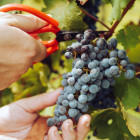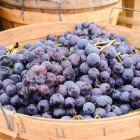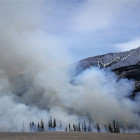Winemakers have a lot to contend with. Creating optimal growing conditions for grapes, managing and mitigating the various challenges of ever-changing weather and cultivating grapes into something fit for the bottle is all demanding stuff, and for an added layer of complexity they need to be constantly vigilant for vineyard pests and diseases. If the vineyard falls foul of these, it could spell disaster for the whole crop. Here are the most common blighters, and how winemakers deal with them.
Common vineyard pests
Phylloxera
Arguably one of the most infamous vineyard pests, phylloxera has historically had a profound impact on the wine industry. A microscopic aphid that feeds on the roots of grapevines, this pest originated in North America and was accidentally bought over to Europe in the 1860s where it decimated vineyards in what is often referred to as the ‘Great French Wine Blight’. Some 70% of the country’s vines were lost.
Curiously, American rootstocks are resistant to the pest, so the only preventative cure has been to graft European vines onto American rootstocks where compatible. Phylloxera still exists today, but is usually only found in vineyards that use vines with pre-phylloxera European rootstock.
Roundworm
Also known as nematodes, these tiny pests take over and feed on the area around and inside the vine root. Like phylloxera there’s no way to eliminate this pest once it’s arrived. Instead, preventative measures must be taken by using resistant rootstock when planting vines.
Grapevine moth
Grape-eating moths pose a real challenge for vineyards due to their ability to survive all year long, and the fact that they can cause serious damage at each part of their life cycle as they feed on different parts of the plant. However, they are relatively easy to deal with, and can be controlled with insecticides.
Leafhoppers
Leafhoppers nibble on vine leaves leaving small yellow or white spots that are incapable of photosynthesis. The leaves then die and drop from the plant, often resulting in sunburned grapes. Infected vines often become less productive in the future. However, leafhoppers are often controlled by natural predators such as spiders and mites, while farming practices such as removing leafhopper-harbouring wild grasses and weeds can keep them at bay. These pests are also easily thwarted by organic soaps and oils rubbed directly onto the vine leaves.
Mealybugs
Mealybugs reside in the wood of a vine trunk before moving onto the canopy in the summer months. Once on the grapes, they infest the berries with egg sacs and larvae – these grapes must subsequently be discarded. Ladybirds and wasps are natural mealybug predators, so winemakers often welcome these bugs into their vineyards. Training vines so grape clusters don’t touch the wood of the vine trunk can also help prevent mealybugs finding their way onto the grapes.
Common vineyard diseases
Powdery mildew
Also known as oidium, powdery fungus attacks both vine and grape, covering them in a fine, powdery fungus that prevents photosynthesis and ruining grape clusters. Spores can grow exponentially, are easily transferred to other vines through wind and rainfall, and can survive the winter inside dormant branches. As such, this is one of the hardest vineyard diseases to eradicate and requires regular chemical treatment and constant vigilance.
Downy mildew
Another fungal disease, downy mildew typically occurs as temperatures begin to drop towards autumn. Its symptoms are oil spots, bright green patches and a mouldy cover on leaves, which again counteracts efficient photosynthesis. The infection can also reach the berries, causing them to shrivel and dry. Like powdery mildew, this is a very difficult disease to mitigate once it’s taken hold, so prevention is key.
Pierce’s disease
Pierce’s disease prevents vines from transporting water efficiently within their trunks and roots, eventually killing the vine. This disease is spread quickly by bugs called glassy-winged sharpshooters in California, and by sap-feeding insects in Europe. Currently there is no cure for Pierce’s disease, so vineyards must take preventative measures through insecticides and biological control methods, such as deploying parasitic wasps that will kill the glassy-winged sharpshooters.
Black rot
Black rot thrives in warm, humid climates, first causing brown spots on leaves and shoots, then reaching berries which eventually lose their moisture and shrink into raisins covered in black dots. Good air circulation and sun exposure can help prevent black rot, as can the application of copper-based fungicides at the onset of vine growth.
Botrytis
Also known as grey mould or bunch rot, botrytis can strike anywhere and at any time of the year, although it’s more prevalent in rainy conditions. The disease usually appears initially as a discolouration of grapes, creating a fuzzy grey or blue appearance as the fungus permeates the berries. It also creates a noticeable vinegary smell. This disease multiples rapidly and little can be done to stop it once it’s taken hold, so some vineyards are experimenting with rain shelters to help prevent its growth.
However, in some conditions botrytis can actually be beneficial for certain white grape varieties. Infected grapes can produce spectacular dessert wines, and in this instance the fungus is referred to as ‘noble rot’.






